Just days after then-U.S. President Ronald Reagan made his famous “Tear down this wall!” speech in West Berlin in June of 1987, German photographer Manfred Faber took a picture of a uniquely modified helicopter wearing an unassuming civilian paint job and carrying a U.S. civil registration code at Frankfurt Airport. Documents we have obtained via the Freedom of Information Act, along with information from other sources, point to this particular Hughes Little Bird being a part of one of the U.S. military’s most top-secret aviation units ever, formally called the 1st Rotary Wing Test Activity, but better known as Seaspray.
We reached out to Mr. Faber, who was gracious enough to let us use his photograph for this story. You can find more of his work here. Unfortunately, he had no additional information on the helicopter, which had the registration N1111U at the time, or why it might have been in Frankfurt.
Per information we obtained from the Federal Aviation Administration (FAA), the aircraft started life as a Hughes Model 369D, the manufacturer’s name for the OH-6D helicopter. This was an improved version of the Vietnam War-era OH-6A Cayuse light scout helicopter. The most obvious external improvements were the addition of a new five-blade main rotor in place of the original four-blade design and new T-shaped tail assembly. It also featured an improved Allison turboshaft engine.
The resulting variant was significantly faster and more powerful than its predecessors. N1111U clearly took advantage of that additional capability to carry a variety of cutting edge equipment, turning it into something of a real-life analog to the fictional helicopter in the television show Airwolf.

A night-flying, covert transport
Under the nose, N1111U has what appears to be a Hughes AN/AAQ-16 forward-looking infrared (FLIR) turret, which can capture infrared full motion video during the day and night and in most any weather conditions. After acquiring the rights to the design, Raytheon Systems Company continued producing versions of this system into the 1990s and it was a standard feature on early U.S. Army special operations MH-47 Chinooks and MH-60 Black Hawks, as well as U.S. Air Force HH-60G Pave Hawk rescue helicopters.
The helicopter also has a plank on the side that special operators could ride on, which also doubles as an extended range fuel tank. A center spar running through the small rear cabin would connect this assembly to another plank on the opposite side of the aircraft.
There are also three large blade antennas under the nose, which are typically associated with high-frequency radios and other communications systems. A round “cake pan” antenna on the helicopter’s boom is indicative of an early satellite communications system or satellite navigation system. There are also missile approach warning detectors on the nose. These are typically found on aircraft meant to fly into or through contested airspace. There may be additional internal components, including in the exhaust system, to dampen the aircraft’s infrared signature to help protect it from short-range heat-seeking surface-to-air missiles, but the area where a side-mounted infrared-dampening exhaust port would be is blanked off on this aircraft.
There are various other less obvious specialized features on N1111U, including “slime lights” and a small infrared light on the tail for night formation flying. The helicopter also has the mounting points above the rear door for the Fast Rope Insertion Extraction System, or FRIES, which would allow individuals on the planks to quickly rappel into an area if the helicopter could not find a suitable landing spot.
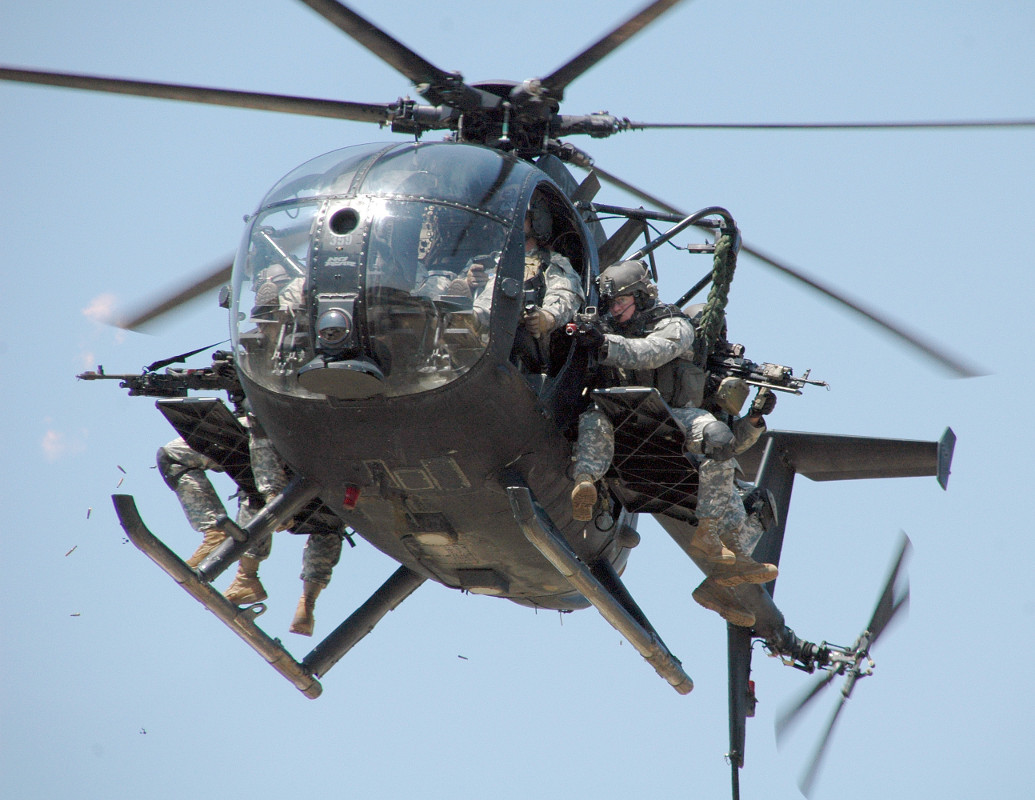
We can’t say for sure whether N1111U had a night vision goggle compatible cockpit configuration or not. Given the helicopter’s other night-flying features and the experience the U.S. military had gained from its abortive attempt to rescue American hostages in Iran in 1980, it seems more than plausible that the pilots would have trained to fly it while using NVGs by 1987.
Taken together, the helicopter looks state-of-the-art for its time and particularly well configured to insert small numbers of special operators discreetly, even in the dead of night, into very confined spaces. Its civilian style paint job would have helped it avoid unwanted attention and allowed it to hide in plain sight to some degree, especially at busy major airports such as the one in Frankfurt.
These are all features that one might also expect to find on early MH-6 Little Birds that the U.S. Army’s elite Task Force 160 operated after its activation in 1981. That unit eventually evolved into the 160th Special Operations Aviation Regiment we know today.
The Hughes 369D also benefited from improvements Hughes had developed for the commercial Model 500, which McDonnell Douglas produced after acquiring Hughes in 1984 as the MD 500 or Defender. Further improved variants of the Little Bird design continue to serve with the 160th. Except we know that this helicopter wasn’t part of the 160th.
The video below of an MH-6 from the US Army’s 160th Special Operations Aviation Regiment shows off the speed and agility of the Little Bird platform.

Corporate shell-game and a top secret unit
Around the same time that the Army created Task Force 160 in 1981, in cooperation with the Central Intelligence Agency, it formed Seaspray. This organization’s mission was specifically to carry out “black” covert and clandestine missions, often in cooperation with equally top-secret Army units such as Delta Force and the Intelligence Support Activity. An organization that officials referred to broadly as the “Special Operations Division” oversaw all of these units.
Journalist Steven Emerson, in his 1988 book Secret Warriors: Inside the Covert Military Operations of the Reagan Era, describes the formation of Seaspray in this way:
“The [Special Operations] Division’s final step in creating Seaspray was to establish a commercial ‘cover,’ so that it could fly classified missions without being recognized as part of the U.S. military. Seaspray became integrated into a CIA proprietary company. Aviation Tech Services, that allowed Seaspray helicopters to appear to be part of a private company. Aviation Tech Services also provided liability protection for Seaspray.”
Because the military is severely restricted in setting up incorporated proprietaries, it turned to the CIA, which is not encumbered by such Congressional restrictions. Seaspray itself was headquartered at Fort Eustis, Virginia, and innocuously named the First Rotary Wing Test Activity as an internal Army cover. Another secret Seaspray headquarters was located in Tampa, in order to support Central American operations.”
According to the documents we obtained from the FAA, in February 1981, none other than Aviation Technical Services purchased N1111U direct from Hughes. The registration was originally linked to an address in Miami, Florida, further south of Tampa.
In September 1981, the address of the registration changed to a location in Rocky Mount, North Carolina. This city sits 80 miles west of the Harvey Point Defense Testing Activity, a collection of facilities commonly associated with the CIA and covert U.S. military operations. Before setting out on the raid that ultimately killed Osama Bin Laden in May 2011, SEAL Team Six operators trained on a full-scale mockup of the Al Qaeda leader’s compound in Abbottabad, Pakistan at Harvey Point.
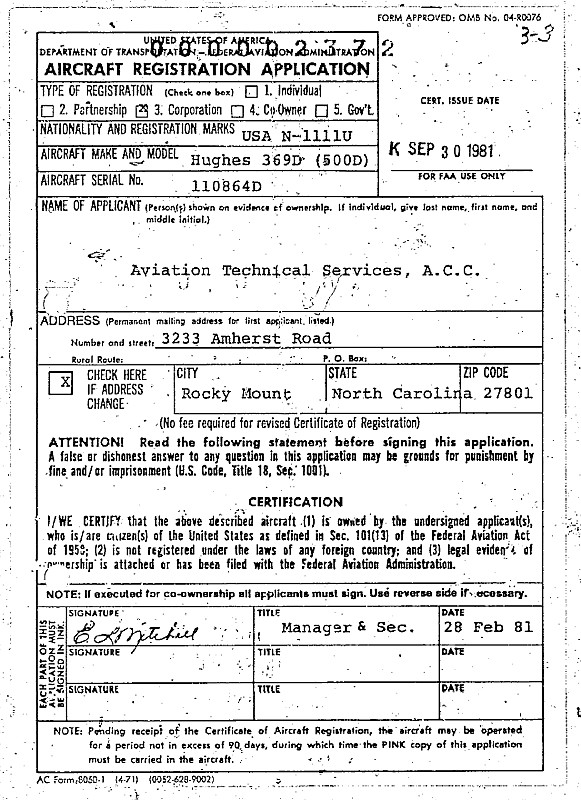
In October 1981, Aviation Technical Services changed the address on the helicopter’s registration yet again, this time to Fort Eustis proper. That was still the case when Manfred Faber caught a glimpse of N1111U in Germany on June 18, 1987. We, unfortunately, have no idea what the helicopter might have been doing in the interim. The existence of Seaspray came out in 1985 as a result of the Iran-Contra scandal and the unit reportedly had conducted missions in El Salvador, Honduras, and Nicaragua in support of various covert activities in Central America.
Seaspray also reportedly used one of its Little Birds to ferry Lebanese Christian leader Bashir Gemayel from Beirut to a secondary location as part of a secret trip to Washington, D.C. in 1981. As part of their efforts to neutralize the Palestinian Liberation Organization and other terrorist groups in Lebanon, the United States and Israel supported Gamayel and his organization, known as the Phalange. This group subsequently became infamous for massacring hundreds of Palestinian and Lebanese Shia Muslims in the Sabra and Shatila refugee camps in 1982.
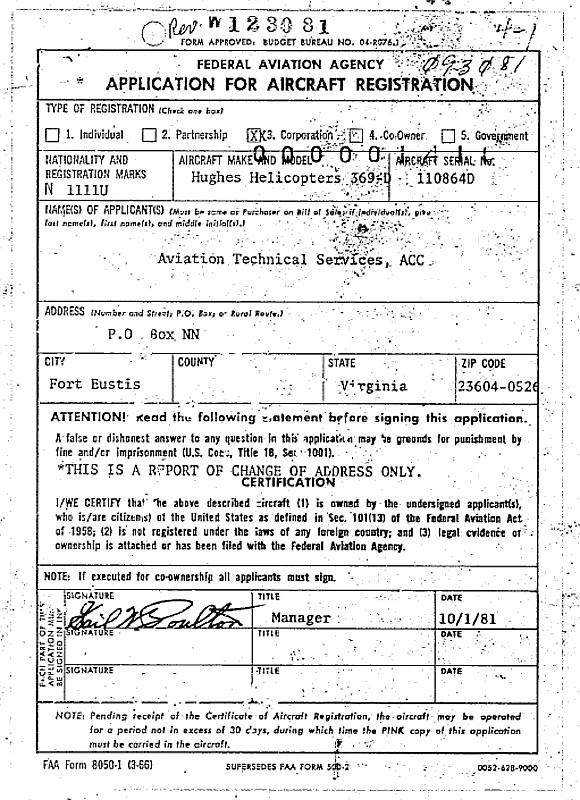
Why Germany?
While we don’t have any specific information as to what this Seaspray helicopter was doing in Germany in 1987, it’s highly probable that it, along with other U.S. military forces and elements of the U.S. Intelligence Community, was supporting Reagan’s historic trip. Making his speech in Berlin, then a divided city deep inside East Germany, which had been a playground for espionage and other clandestine activities for decades, was a major security risk in of itself.
The U.S. government would have been concerned, at least at some level, that the Soviets or the East Germans might seek to assassinate the president or otherwise violently disrupt his speech, potentially seeking out proxies to try to do so in a more deniable fashion. West German leftist groups had organized to oppose Reagan’s visit and thousands of protesters descended on West Berlin to demonstrate. Militant organizations such as the Red Army Faction remained active and there was the growing threat of international terrorism, as well.

On top of that, the Reagan administration had blamed Libyan leader Muammar Gaddafi and his government directly for a bombing in West Berlin in 1986 that killed three people, including two U.S. Army soldiers. That incident led to punitive air strikes, nicknamed Operation El Dorado Canyon, against Libya later in the year.
The Libyan dictator survived those strikes, but he claimed that his adoptive infant daughter Hana had died in the raid, which remains a source of controversy. Regardless, Gaddafi vowed to continue supporting terrorist groups, such as the Red Army Faction, and pursue retaliatory action against the United States himself.
All told, it is not hard to imagine that U.S. officials decided to keep Seaspray helicopters and a team of Delta Force operators, in addition to various other forces, on standby in West Germany. If any crisis had erupted, Reagan could have ended up effectively stranded inside East Germany and this helicopter and other assets could have rushed in to extract him if necessary.
Of course, Frankfurt is more than 250 miles southwest of Berlin, so it is possible that N1111U wasn’t staged there during the actual speech, though the extended range fuel tanks would have helped the small helicopter cover that distance if necessary. In addition, Faber did take his picture four days after the speech, so it’s also possible that the force that included elements from Seaspray was in the process of redeploying back to the United States.

Where is the helicopter now?
We don’t know what has happened to N1111U since it appeared in Germany. It is possible that the entire operation raised the profile of the helicopter, and others that participated in the mission, whatever it actually was, to the point of needing a new cover story.
In August 1987, Aviation Technical Services sold the aircraft, along with two other Hughes Model 369Ds, to Atlantic Air Associates. The company re-registered N1111U as N9159A to an address in Arlington Virginia, within spitting distance of CIA headquarters. The other two Little Birds had the N-numbers N7299A and N9166A.

In August 1991, Atlantic Air Associates sold the helicopter again, to a company called the Franklin Air Company in Baltimore, Maryland. It changed registration numbers in the process, becoming N26RV.
In January 1992, Franklin Air sent the helicopter to Summit Aviation in Delaware, another company with long-standing links to the CIA, to receive a Robertson Aviation HA-010 Range Extension Fuel Tank System, according to an airworthiness notice the company sent to the FAA. Then, in August 1992, the firm reassigned the N26RV N-number to a Hughes Model 369F, suggesting it had converted the helicopter to a more modern version entirely. In 2013, it disappears from the U.S. civil register altogether.
Atlantic Air Associates and Franklin Air Company have zero formal web presence. The Atlantic Air Associates address the FAA had on file points to a nondescript office building. Franklin Air Company was supposedly running its operations out of a strip mall.
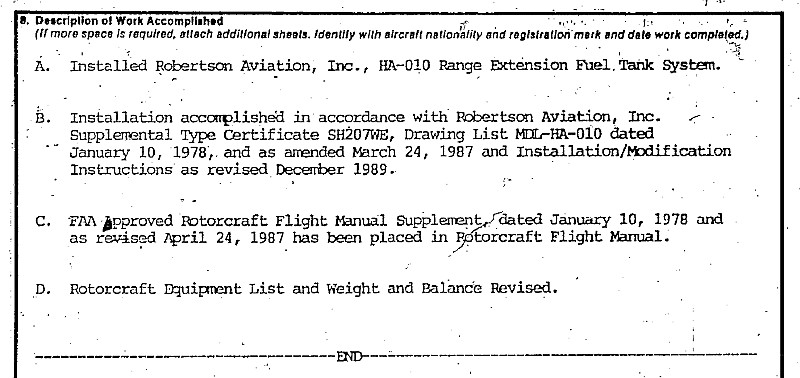
What happened to Seaspray?
Seaspray no longer exists under that name, either. The unit eventually came under the direct control of the Intelligence Support Activity, becoming known as the Flight Concepts Division (FCD). In 1989, the Army officially stopped using the Intelligence Support Activity moniker for that organization, which has reportedly taken on a number of other cover designations since then.
You can read more about how the FCD fits into the U.S. military’s top-secret special operations aviation communities here, but suffice to say, it remains one of the U.S. military’s most closely guarded secrets. An undated job posting for a position at Fort Eustis noted that the base fire chief couldn’t even get into the organization’s main hangar – which sits behind two layers of fencing and has its own gate to the taxiway – for emergency planning purposes.
“Research activities are also conducted by the Flight Concepts Division that is highly secret and access for pre-planning purpose is non-existent” the same notice explained. “Nature of their work is known to be hazardous.”
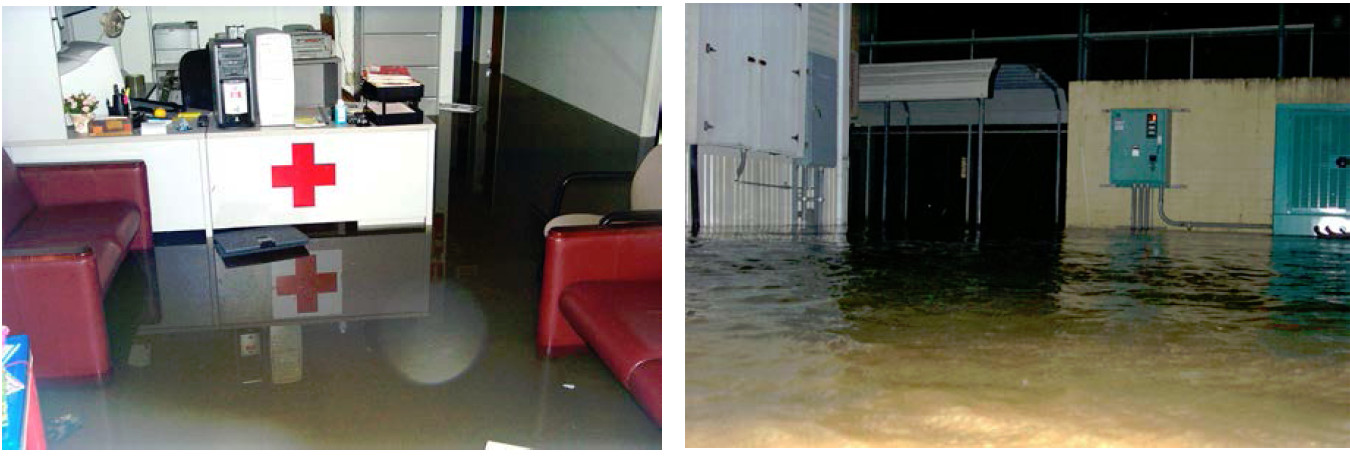
The unit has reportedly flown a wide variety of U.S.- and foreign-made aircraft over the years and has been involved in modifying those aircraft for highly specialized missions. The most notable that the FCD has reportedly had a direct hand in the development of the famous “Stealth Hawk,” a heavily updated MH-60 Black Hawk with various stealthy features, one of which crashed during the Bin Laden raid in Pakistan in 2011. The unit’s pilots may have actually flown that mission and they maintain a very close working relationship with the 160th Special Operations Aviation Regiment.
Publicly available satellite imagery of Fort Eustis’ Felker Army Airfield has long been devoid of Little Birds and there is evidence FCD might have traded them for Bell 407 helicopters, or another type of helicopter with only four blades on its main rotor, for unknown reasons in recent years. This might help explain the departure of N26RV from the civil register in 2013.
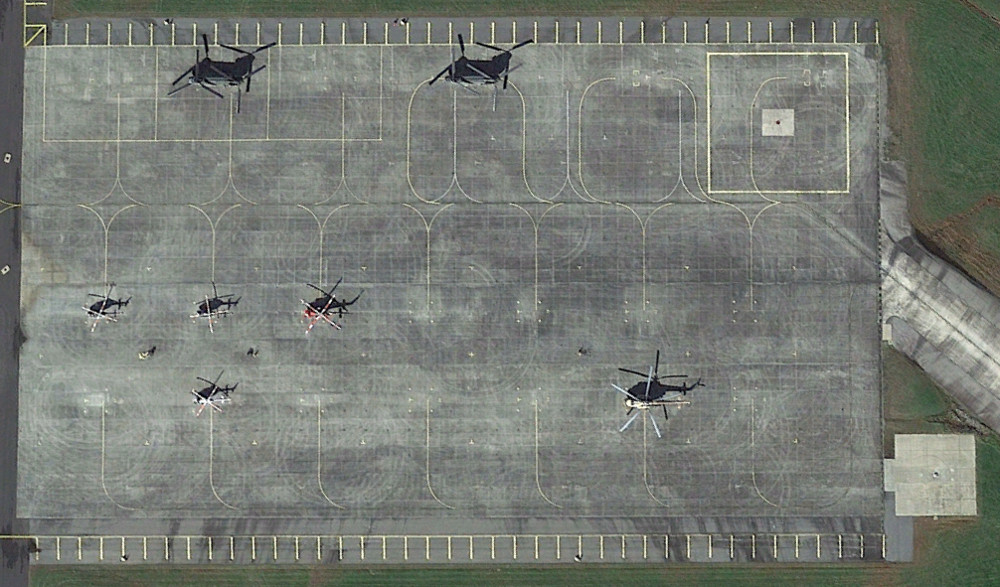
It is possible that FCD is itself a cover name. In his book Relentless Strike: The Secret History of Joint Special Operations Command, journalist Sean Naylor says that some or all of that entity eventually turned into E Squadron, Delta Force.
The FCD remained in existence at Fort Eustis’ Felker Army Airfield publicly until at least 2016 and is in the process of getting a number of new facilities, including a new main hangar and a completely separate ramp. The Army has reportedly now renamed it the Aviation Technology Office, or ATO.
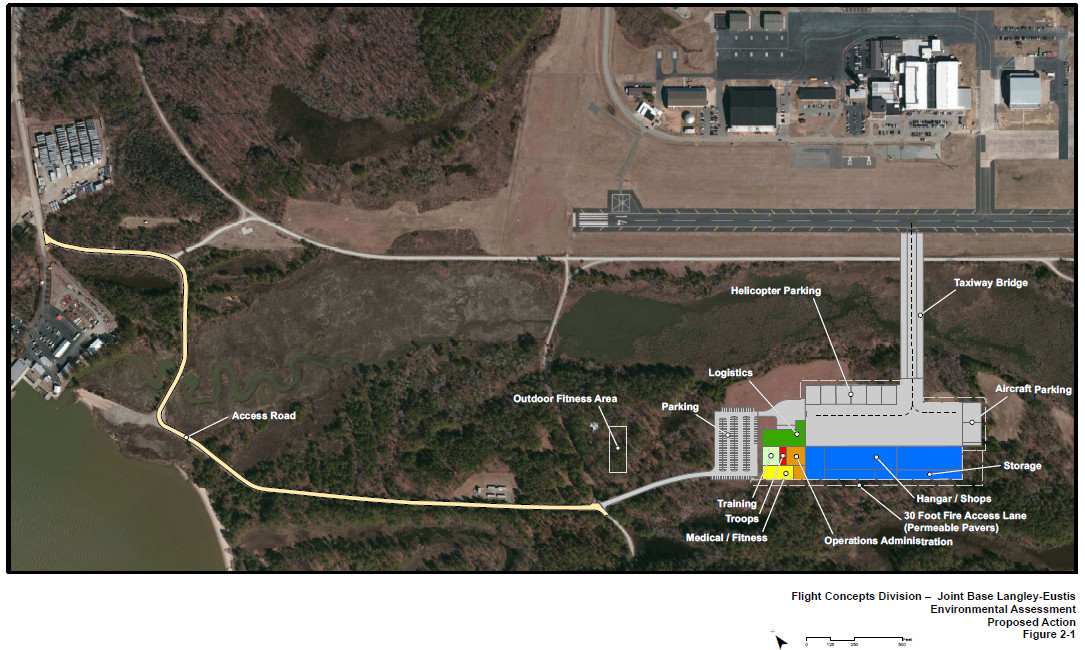
Depending on where the ATO is still using Little Birds at all, and what condition N26RV might be in after more than three decades of covert operations, Manfred Faber’s picture may turn out to be one of, if not the only image of this extremely rare helicopter to ever emerge into the public eye.
Contact the author: jtrevithickpr@gmail.com
